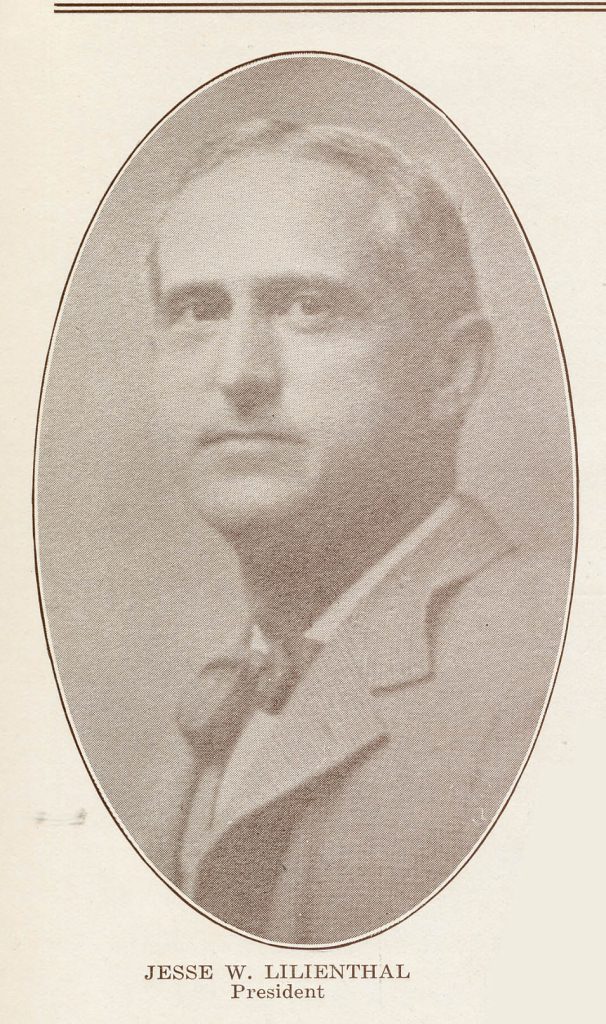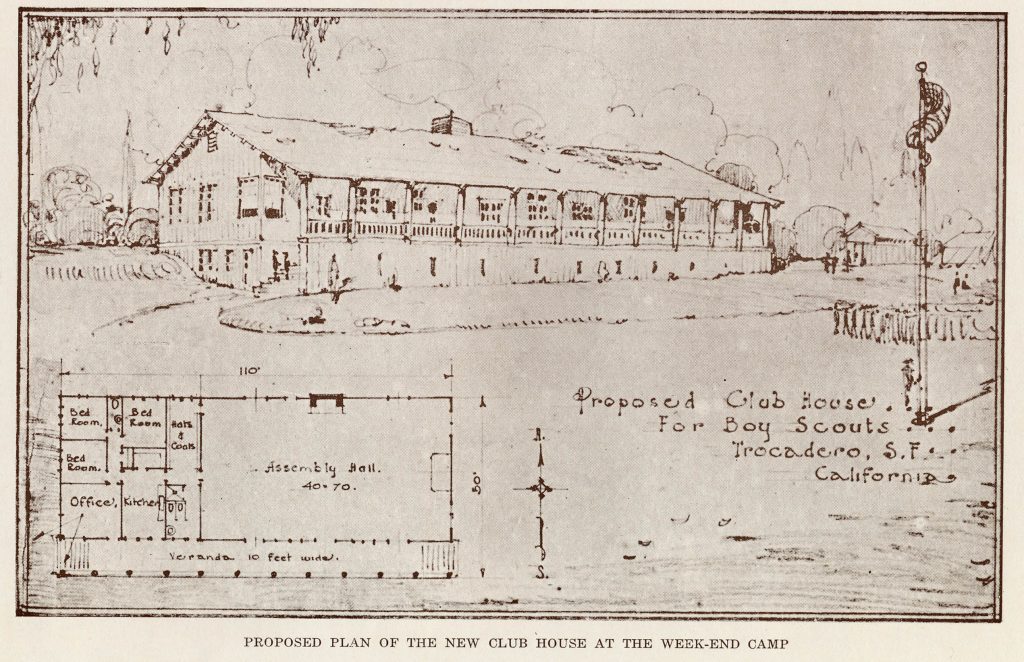Site Navigation: Home » Camp_Lilienthal-SF
Camp Name:
Name Pronunciation:
Name Origination:
Council Affiliation 1:
Council Affiliation 2:
Property:
Location:
Location Coordinates:
County:
First Year:
Final Year:
Years Active:
Disposition:
Acreage:
Elevation:
Address:
Phone:
Notes:
Lilienthal
Lily-n-thal
Lilienthal was the name of the first SF Council President, Jesse Lilienthal
San Francisco Council #51 (1917-1964)
n/a
leased property
San Francisco, CA (Stern Grove)
37.736344, -122.487164 (click on coordinates for Camp Location)
San Francisco
1919
1925
6
Site was not ideal, Lease ended
Approximately 30
55 feet
Sloat Blvd at Vale
none
Land leased from Parkside Reality Company, Pine Lake was also known as Mud Lake
Camp Lilienthal was the first permanent weekend camp of the San Francisco Council and was located between 24th to 34th avenues in the Parkside District of San Francisco. Camp Lilienthal opened for camping on June 14, 1919 but was not officially dedicated until October. The camp operated as a week-end camp for six years from 1919 to 1925. The camp was named in honor of the first Council President Jesse W. Lilienthal who passed away unexpectantly due to a short illness on June 4, 1919 only 10 days before the camp opened for the first time.
The camp was composed of a clubhouse/mess hall, lake, parade grounds and camping area. The small lake was called Pine Lake but was also known as Mud Lake and Laguna Puerca. At first the troop camping area was simply basic six person tents with wooden floors. A few years later wooden cabins replaced the canvass tents. The Scouts could reach the new camp by a five-cent carfare using the “L” street car line to the Parkside area or by walking a few miles to enjoy a real camping experience for several days at a time
Clubhouse / Mess Hall
The camp clubhouse as it was called, was a 2800 sq ft building that contained a kitchen, bathroom, three bedrooms, an office, a 110 foot porch spanning the length of the building and a large meeting area that was used as both the mess hall and a meeting place. On one end of the mess hall was a platform where speakers could stand, and on the wall that faced the side of the hill was a large fireplace. The cost to build the club house was $5000.00 and volunteer labor was used to construct the building. Furniture for the new clubhouse that was formerly used in the War Service club was donated to the Scouts for use at the new Week-end camp by the Masons.
Pine Lake
The small lake that was located at the west end of the campground was known as Pine Lake. The lake was approximately 5 acres in size and was used for swimming and boating by the Scouts. In April of 1920, six months after the camp was officially opened, two Scouts would drown in Pine Lake when their canoe tips over during a gust of wind and their “comrades were unable to save them” according to the San Francisco Chronicle. Today the lake is not so much a lake as it is a large muddy pond.
Camping Comes to an End
During the early part of the 1920’s over two-hundred and fifty Scouts were using the week-end camp. During the first five months of 1925 though that number had dropped to an average of 150 boys per weekend. The Camp Lilienthal site was also used for father and son dinners that were held in the camp club-house. However by June of 1925, the Council was compelled to suspend operations because of a lack of funds. Per the Council, “every effort is being made to locate a new camp site adjacent to the city and to secure funds to make this camp available to the Scouts who cannot afford to go any distance for their week-end outings.”
The purchase of the Watson Ranch in Cazadero (which became Camp Royaneh) for a permanent summer camp may have been the death blow for Camp Lilienthal. With the loss of the week-end camp site, the United States Navy (through the kindness of Captain Wallace Bertholf, Commander of Yerba Buena Island) allowed the Council to camp on the Island for week-end outings for a time being.
The former site of Camp Lilienthal is today part of the Stern Grove park in San Francisco. The lake which the Scouts used for swimming and boating has been reduced to half its size and the large parade grounds is now a dog park for San Franciscans to enjoy. The troop camping area is now a parking lot for the city. Bits and pieces of the camp still remain as portions of the clubhouse fireplace can still be found behind where the building was located and large cut stones are piled up near the parking lot that were once used as the foundation for the building.
A new Camp Lilienthal rises from the ashes
Four years later in 1929, the San Francisco council would open a new camp located above Fairfax in Marin County that would also be called Camp Lilienthal. The new Camp Lilienthal was used for both the San Francisco Council and the San Francisco Bay Area Council until it was sold in 1973.

“In times like these we know no creeds. For the American of today there should be only this thought—one country, one flag, one God.” After these words were spoken, Jesse W. Lilienthal, President of the United Railroads and President of the San Francisco Council, BSA and one of the most widely known and admired men of San Francisco sank to the floor in the colonial ballroom at the Hotel St. Francis, and died of a stroke before physicians could reach his side. He was 64 years of age.


STEM
Order of the Arrow